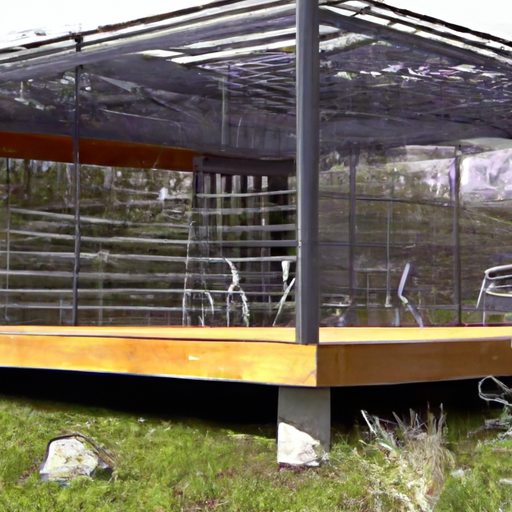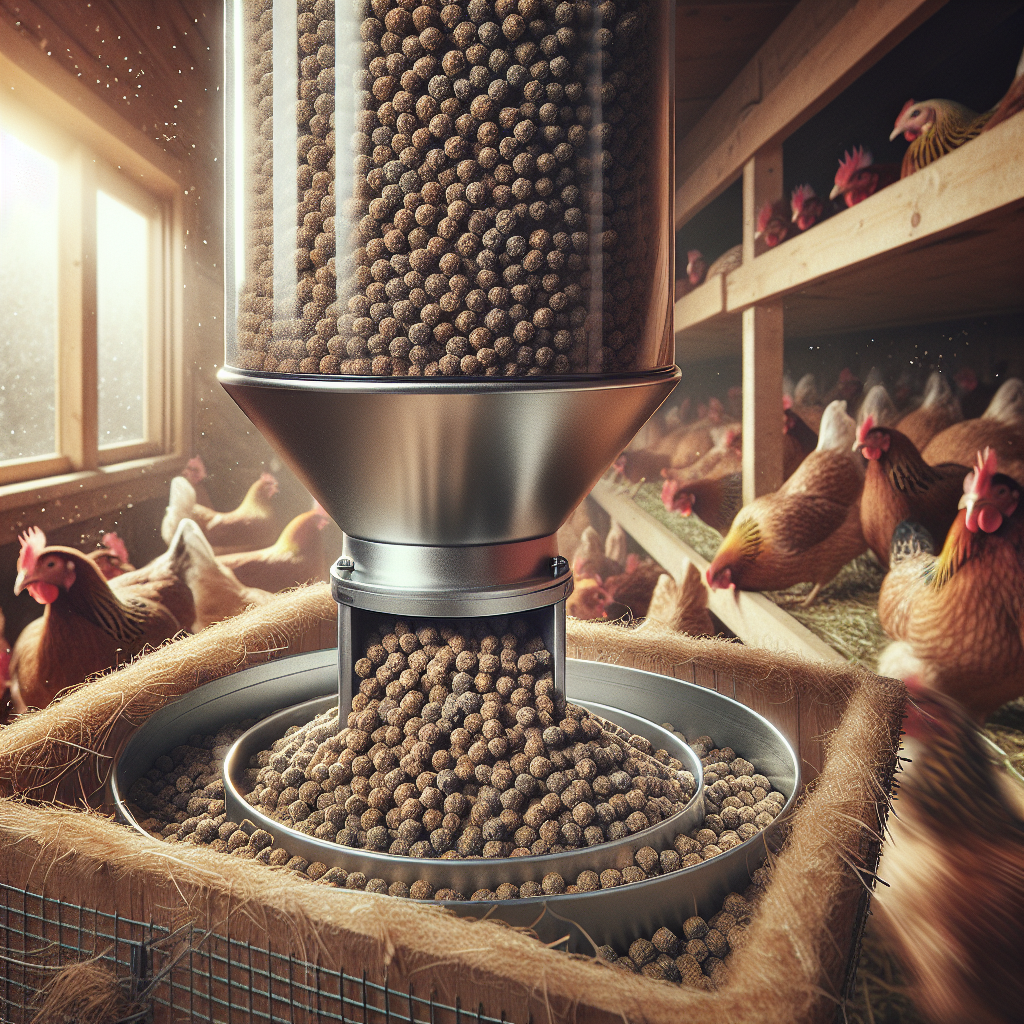Are you wondering if there are specific coop designs that work better in urban or rural settings? Well, you’re in luck! In this article, we will explore the differences between coop designs for urban and rural environments. Whether you live in a bustling city or a peaceful countryside, finding the right coop design for your feathered friends is crucial. So, sit back, relax, and let’s discover the best coop design for your specific setting.
Coop Designs for Urban Settings
Space Constraints
When designing a chicken coop for an urban setting, space constraints are a primary consideration. Urban areas often have limited available space, making it essential to maximize the use of every inch. One popular design solution is a vertical coop, utilizing multiple levels to maximize the use of vertical space. These multi-level coops often feature ramps or staircases to provide easy access for the chickens between the different levels. Additionally, incorporating space-saving features such as foldable nesting boxes and hanging feeders can help optimize the available space.
Predator Protection
Urban settings may also present unique challenges when it comes to predator protection. While rural areas may have larger predators such as coyotes or foxes, urban areas are not exempt from smaller predators like raccoons or stray cats. To prevent attacks on your urban chicken coop, it’s crucial to consider reinforced fencing, secure latches, and predator-proof gaps. Installing an automatic door opener that only opens during daylight hours can also provide an extra layer of protection against predators that are more active at night.
Noise and Smell Considerations
Living in close proximity to neighbors means careful consideration must be given to noise and smell factors when designing a chicken coop in an urban setting. To minimize noise, opt for quieter breeds and avoid roosters, as their crowing can disturb the peace. Additionally, soundproofing the coop can help reduce noise levels. As for smell considerations, regularly cleaning the coop and using odor-absorbing materials, such as pine shavings or straw, can prevent unpleasant odors from becoming a nuisance to you or your neighbors.
Aesthetics
In urban environments, maintaining a cohesive aesthetic is often a priority. Coop designs that blend seamlessly with the surrounding urban landscape can help enhance the overall appearance of your property. Consider using materials that complement the architectural style of your home or incorporate elements like living roofs or decorative fencing to create an attractive and visually pleasing coop. Additionally, incorporating landscaping features, such as flowering plants or vertical gardens, can help soften the structure and make it a more appealing addition to your urban setting.
Ease of Maintenance
In busy urban settings, time is often a precious commodity. Therefore, designing a chicken coop with ease of maintenance in mind is essential. Opt for a design that allows for easy cleaning, such as removable trays or flooring that can be easily hosed down. Including storage areas for feed and supplies within the coop can also help keep everything organized and easily accessible, saving you time and effort when it comes to daily chores.
Integration with Urban Landscape
When designing a coop for an urban setting, it’s important to ensure that it integrates well with the surrounding landscape. This means considering factors such as sightlines, privacy, and access. Strategic placement of the coop can help maintain privacy for both you and your neighbors. Incorporating features like trellises or fences can provide additional privacy while still allowing sufficient airflow and sunlight for the chickens. Additionally, consider how the coop will visually interact with other structures in the area, such as existing sheds or garden structures, to create a harmonious urban landscape.
Security
Ensuring the security of your urban chicken coop is paramount to protect your flock from potential theft or vandalism. Choose materials that are sturdy and difficult to break into, such as reinforced mesh or metal fencing. Installing security cameras or motion sensor lights can act as deterrents for potential intruders. It’s also important to consider the location of the coop, placing it in a well-lit area or within view of neighboring houses can help prevent unauthorized access.
Neighborhood Regulations
Before embarking on the design of a coop in an urban setting, it is crucial to research and abide by any neighborhood regulations or ordinances regarding chicken keeping. Check for rules regarding the maximum number of chickens allowed, setback requirements, and any restrictions on coop size or design. By following these regulations, you can ensure a harmonious relationship with your neighbors and avoid any potential legal issues.
Access to Utilities
In urban settings, access to utilities such as electricity and water is usually readily available. When designing your coop, consider incorporating features that take advantage of these utilities. For example, you may choose to install automatic waterers or heating elements to ensure a constant supply of fresh water and a comfortable environment for your chickens. Lights inside the coop can also be powered by electricity, allowing for easy evening check-ins and improved visibility during nighttime maintenance tasks.
Climate Considerations
Urban settings may present unique climate challenges, such as heat islands or increased air pollution. When designing your coop, take into account the specific climate conditions of your area. Ensure proper ventilation to combat excessive heat buildup and consider using heat-resistant materials to mitigate the impact of urban heat. Additionally, incorporating air filtration systems can help minimize the negative effects of air pollution on the health and well-being of your chickens.
Coop Designs for Rural Settings
Space Availability
Unlike urban areas, rural settings often offer more generous space for chicken coops. Here, you have the opportunity to design spacious coops that allow chickens to roam freely. Consider providing ample outdoor space for your flock to scratch, dust bathe, and forage. Including a chicken run or utilizing movable fencing can give your chickens access to fresh pasture while still offering protection from predators.
Predator Protection
In rural areas, the risk of predator attacks can be higher due to the presence of larger animals such as foxes, coyotes, or even bears. Designing a coop with robust predator protection measures is essential. Reinforcing the coop’s structure with sturdy fencing, burying wire mesh to deter burrowing predators, and using hardware cloth with small openings can help fortify your coop against various predators. Electric fencing can also be a highly effective deterrent for larger predators.
Noise and Smell Considerations
While the noise and smell considerations in a rural setting may not be as pressing as in an urban environment, it is still essential to be mindful of your surroundings. Keep in mind that excessive noise can disturb not only your neighbors but also your own peace and quiet. Opt for quieter breed selections if noise is a concern. Regularly cleaning the coop and implementing proper waste management practices will help control odors and ensure a pleasant environment for both your chickens and yourself.
Aesthetics
In rural settings, the aesthetics of your coop can be influenced by the natural beauty of the surrounding landscape. Consider using materials that blend harmoniously with the rural environment, such as rough-cut timbers or a rustic color palette. Integrating the coop into the natural landscape by landscaping with native plants or incorporating natural elements like rocks or stones can create a visually appealing and cohesive look.
Ease of Maintenance
While space may be more abundant in rural settings, convenience and ease of maintenance should still be a priority when designing your coop. Include features that simplify daily tasks, such as easy-access nesting boxes, removable flooring for cleaning, and strategically placed doors or windows for efficient ventilation. Ensuring that feed and supplies are stored in a convenient and organized manner will also save you time and effort in the long run.
Integration with Rural Landscape
In rural settings, the integration of your chicken coop with the surrounding landscape is particularly important. Consider how the coop will visually interact with other structures on your property, such as barns or sheds. Designing the coop with complementary architectural elements or using materials that mirror those existing structures can help create a cohesive and visually pleasing rural landscape. Nestling the coop among trees or utilizing natural screening can also provide a more integrated and harmonious appearance.
Security
While rural areas can offer more seclusion and privacy, it is still important to protect your coop from potential intruders. Larger predators may pose a greater threat in rural settings; therefore, designing a coop with reinforced fencing, sturdy locks, and secure latches is crucial. If the area is known for wildlife activity, consider installing motion sensor lights or utilizing deterrents like noise-emitting devices to keep predators at bay.
Zoning Regulations
Before designing a coop in a rural setting, it is essential to review any zoning regulations or restrictions that may apply. Certain areas may have specific requirements regarding coop size, placement, or the number of chickens allowed. By adhering to these regulations, you can ensure a compliant and legal operation while avoiding potential conflicts with neighbors or local authorities.
Off-grid Options
In remote rural settings, accessing utilities can be a challenge. However, this presents an opportunity to explore off-grid options for your coop. Consider incorporating solar panels to power lighting or heating elements. Rainwater collection systems can be used to provide a sustainable water supply for your chickens. Exploring these off-grid alternatives not only reduces your environmental impact but also ensures that your coop remains functional even in the absence of traditional utilities.
Climate Considerations
Rural settings often experience different climate conditions compared to urban areas. When designing your coop, take into account the specific climate factors of your location. In colder regions, insulating the coop and providing a reliable heat source can keep your chickens comfortable during winter. In hotter climates, prioritize well-ventilated designs and consider using shade cloth or natural shade provided by trees or structures. By tailoring your coop to the local climate conditions, you can provide an optimal environment for your flock.
In conclusion, the design of a chicken coop should be adapted to the specific requirements and conditions of the setting, whether it is urban or rural. By considering factors such as space constraints, predator protection, noise and smell considerations, aesthetics, ease of maintenance, integration with the landscape, security, regulations, access to utilities, and climate, you can create a coop that meets the unique needs of your chickens while harmonizing with its surroundings. Whether you’re raising a small flock in a tight urban space or enjoying the freedom of a rural homestead, a well-designed coop is a crucial component of a successful and enjoyable chicken-keeping experience.




